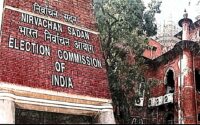The Free Press- Formulation and Disobedience
This article is written by Mansi Vyas of Law College, UOR, Jaipur and Curated by Naman Jain of Bennett University, Greater Noida.
“Freedom of the press is not just important to democracy, it is democracy.”-Walter Cronkite
As citizens of a democratic state, we have the right to know, tell, and comment on the national happenings. Furthermore, these rights could only be accomplished through the fourth pillar of democracy i.e., Media. It is an essential pillar as it keeps a check on the other pillars. The above is possible only through a free media and a free press. In the absence of such a check, democracy would be in danger.
In the Universal Declaration of Human Rights, the preamble states that “…human beings shall enjoy the freedom of speech and belief …”. In Art. 19 of the Indian Constitution, it is stated that such freedom includes freedom of uninterrupted receival, an impartation of information, and ideas through media. It is owing to this right that our constitution adopted Article 19 i.e., freedom of speech and expression.
The freedom of press is developed by some of the following cases:
Recognition of freedom of press-
- Romesh Thappar v The State of Madras 1950– It was held that “freedom of speech and expression includes freedom of propagation of ideas, and that freedom is ensured by the freedom of circulation.”
- Prabha Dutt v Union of India & others 1962– It was held that the constitutional right of freedom of speech and expression conferred by article 19(1)(a) of the constitution which includes the freedom of the press, is not an absolute one…”
Removing unreasonable restrictions on press-
- Bennett Coleman and Co. v Union of India 1973– Import order 1955, Newsprint order 1962, and Newsprint policy 1972-73 were held as unconstitutional. The Court held that “the law laying excessive and prohibitive burden restricting the circulation of a newspaper will not be saved by Article 19(2).
Acknowledging reasonable rights of press-
- Sahara India Real Estate Corp. Ltd. & others v. Sebi & anr. 2012– It was held that “the media has a right to know the events happening in courts, and to disseminate the information to public…”
Protecting advertisements as part of media-
- Humdard Dawakhana v. Union of India 1960– It denied protection of Article 19(1)(a) to advertisements, saying that indeed they are a form of speech, but the fact that they are used for promotion cannot be denied. Therefore, merely denying traders from commending his wares would not fall within the purview of Article 19(1)(a).
- Indian Express Newspaper Pvt. Ltd. v. Union of India 1985– It was held that the above-mentioned case put restrictions on “unethical” advertisement, but in way of doing that, it denied protection of Article 19(1)(a) to all the commercial advertisements. Therefore, “all commercial advertisements cannot be denied the protection of Article 19(1)(a) merely because they are issued by businessmen.”
Hence, it is via the fundamental right of Article 19 that we deduce the rights of the press.
No matter how systematically the rules got framed, history repeats itself, and we have a history of unsatisfied execution of laws—the evidence of the conditions of the press.
“Newspapers are not made any longer by news or journalism. The sheer weight is making them of money, expressed in gift schemes. They do not serve the interests of the many, but the vested interests of the few.”
The actual situation of the freedom of press could be known through two major aspects-
- Pressure on press and
- Conditions of Journalists.
- Pressure on the press in an undeniable fact. Almost all of us have a fair idea about the biasedness of news channels, news reporters, and journalists to their respected political parties. Most of them, if not all, are pressurized by powerful governments, colleagues, relatives, and even ordinary people. The governments have been hijacking the press for a very long time. Recently, the current government got accused of being like Indra Gandhi. It is said to be an era of “undeclared emergency.”
- Conditions of journalists are not something we are unaware of. According to the Global Impunity index- since 1992, 48 journalists have been killed, 34 have been targeted for murder, and 32 have been murdered with impunity. Furthermore, India has been ranked 14th among the states where journalists are murdered, and their killers go free. India has been on the index 11 times, and the report says that the conditions are worsening with no signs of improvement.
If not directly, the press and journalists are pressurized by the government and people in many indirect ways. Accusing journalists of sedition, libellous newspapers, and the entire media of being anti-nationalists are some of the most common ways of frightening them. With the advancing world,
the digitalization of media has multiplied voices with a good connotation and has also given birth to new threats. The possibilities of people and government destroying their lives pose a sense of self-censorship on them. The noisy statistics and the alarming realizations make it very clear that the current press situation is not even near the tag of being a “free” one.
All the above is not shocking news as we have already acquired 142 rank out of 180 countries in the World Press Freedom Index 2020. It is just another evidence of the fact that we are living under the illusion of free press. The government should let sink in their minds that free press is not about praising the authority; in fact, it is the exact opposite. People need to realize that silencing the journalists is of no good; if so happens, the time is not far away when all news channels will sound the same, and having so many channels over DoorDarshan will not be of any good.
We should try and change the scenario as long as we actually can!
“When the public’s right to know is threatened, and when the rights of free speech and free press are at risk, all of the other liberties we hold dear are endangered.” – Christopher Dodd


